Asrock N68-GS4 FX R2.0 Handleiding
Asrock
Moederbord
N68-GS4 FX R2.0
Bekijk gratis de handleiding van Asrock N68-GS4 FX R2.0 (26 pagina’s), behorend tot de categorie Moederbord. Deze gids werd als nuttig beoordeeld door 20 mensen en kreeg gemiddeld 3.9 sterren uit 10.5 reviews. Heb je een vraag over Asrock N68-GS4 FX R2.0 of wil je andere gebruikers van dit product iets vragen? Stel een vraag
Pagina 1/26

1
NVIDIA RAID Installation Guide
1. NVIDIA BIOS RAID Installation Guide …………………….. 2
1.1 Introduction to RAID ……………………………………. 2
1.2 RAID Configurations Precautions …………………….. 3
1.3 Installing Windows / 64-bit / Vista / 8 / 8 64-bit / 7 7
Vista 64-bit / XP / XP 64-bit With RAID Functions ….. 5
1.3.1 Installing Windows XP / XP 64-bit With
RAID Functions ……………………................. 5
1.3.2 Installing Windows 8 / 8 64-bit / 7 / 7 64-bit
/ Vista / Vista 64-bit With RAID Functions ...... 7
1.4 Create Disk Array ……………………………………….. 8
2. NVIDIA Windows RAID Installation Guide ………………… 11
2.1 NVIDIA Windows RAID Installation Guide for Windows
XP / XP 64-bit Users …………………… ………. 11 ...........
2.2 NVIDIA Windows RAID Installation Guide for Windows
8 / 8 64-bit / 7 / 7 64-bit / Vista / Vista 64-bit Users ….. 21

2
1. NVIDIA BIOS RAID Installation Guide
NVIDIA BIOS RAID Installation Guide is an instruction for you to configure RAID
functions by using NVIDIA RAID Utility under BIOS environment. After you make a
SATA / SATAII driver diskette, press <F2> to enter BIOS setup to set the option to
RAID mode by following the detailed instruction of the “User Manual” in our support CD
or “Quick Installation Guide”, you can start to use NVIDIA RAID Utility to configure
RAID.
This section includes examples of using NVRAID RAID Utility for creating RAID arrays.
If your motherboard is equipped with two SATA / SATAII ports, you may choose to use
RAID 0, RAID 1, or JBOD function with your motherboard. If your motherboard is
equipped with four SATA / SATAII ports, you may choose to use RAID 0, RAID 1,
RAID 0+1, JBOD, or RAID 5 function with your motherboard according to the SATA /
SATAII HDDs amount you install. Please refer to the RAID functions your motherboard
provides in advance and follow the instruction in this section to create RAID arrays.
1.1 Introduction to RAID
The term “RAID” stands for “Redundant Array of Independent Disks”, which is a
method combining two or more hard disk drives into one logical unit. For optimal
performance, please install identical drives of the same model and capacity when
creating a RAID set.
RAID 0 (Data Striping)
RAID 0 is called data striping that optimizes two identical hard disk drives to read and
write data in parallel, interleaved stacks. It will improve data access and storage since
it will double the data transfer rate of a single disk alone while the two hard disks
perform the same work as a single drive but at a sustained data transfer rate.
WARNING!!
Although RAID 0 function can improve the access performance, it does not provide any fault
tolerance. Hot-Plug any HDDs of the RAID 0 Disk will cause data damage or data loss.
RAID 1 (Data Mirroring)
RAID 1 is called data mirroring that copies and maintains an identical image of data
from one drive to a second drive. It provides data protection and increases fault
tolerance to the entire system since the disk array management software will direct
all applications to the surviving drive as it contains a complete copy of the data in
the other drive if one drive fails.

3
RAID 0+1 (Stripe Mirroring)
RAID 0 drives can be mirrored using RAID 1 techniques, resulting in a RAID 0+1
solution for improved performance plus resiliency. The controller combines the
performance of data striping (RAID 0) and the fault tolerance of disk mirroring
(RAID 1). Data is striped across multiple drives and duplicated on another set of
drives.
JBOD (Spanning)
A spanning disk array is equal to the sum of all drives. Spanning stores data onto a
drive until it is full then proceeds to store files onto the next drive in the array. When
any member disk fails, it will affect the entire array. JBOD is not really a RAID, and it
does not support fault tolerance.
RAID 5
RAID 5 stripes both data and parity information across three or more hard disk drives.
Among the advantages of RAID 5configuration include better HDD performance, fault
tolerance, and higher storage capacity. The RAID 5 configuration is best suited for
transaction processing, relational database applications, enterprise resource planning,
and other business systems. Use a minimum of three identical hard disk drives for this
setup.
1.2 RAID Configurations Precautions
1. Please use two new drives if you are creating a RAID 0 (striping) array for
performance. It is recommended to use two SATA drives of the same size. If
you use two drives of different sizes, the smaller capacity hard disk will be
the base storage size for each drive. For example, if one hard disk has an
80GB storage capacity and the other hard disk has 60GB, the maximum
storage capacity for the 80GB-drive becomes 60GB, and the total storage
capacity for this RAID 0 set is 120GB.
2. You may use two new drives, or use an existing drive and a new drive to
create a RAID 1 (mirroring) array for data protection (the new drive must be
of the same size or larger than the existing drive). If you use two drives of
different sizes, the smaller capacity hard disk will be the base storage size.
For example, if one hard disk has an 80GB storage capacity and the other
hard disk has 60GB, the maximum storage capacity for the RAID 1 set is
60GB.
Product specificaties
| Merk: | Asrock |
| Categorie: | Moederbord |
| Model: | N68-GS4 FX R2.0 |
| Breedte: | 221 mm |
| Diepte: | 183 mm |
| Gebruikershandleiding: | Ja |
| Grafische adapter: | GeForce 7025 |
| Ethernet LAN: | Ja |
| Maximum resolutie: | 1920 x 1440 Pixels |
| Type stroombron: | ATX |
| Meegeleverde kabels: | SATA |
| Aantal USB 2.0-poorten: | 4 |
| VGA (D-Sub)poort(en): | 1 |
| Microfoon, line-in ingang: | Ja |
| Aantal Ethernet LAN (RJ-45)-poorten: | 1 |
| Hoofdtelefoonuitgangen: | 1 |
| Certificering: | FCC, CE, WHQL, ErP/EuP, ErP/EuP |
| USB-versie: | 2.0 |
| Ondersteunt Windows: | Ja |
| Processor socket: | Socket AM3+ |
| Systeembus: | 2 GT/s |
| Processorfabrikant: | AMD |
| Trial-software: | Google Chrome Browser and Toolbar |
| Maximum intern geheugen: | 16 GB |
| Ingebouwde grafische adapter: | Ja |
| Audio-uitgangskanalen: | 7.1 kanalen |
| Snelle installatiehandleiding: | Ja |
| Ethernet interface type: | Fast Ethernet, Gigabit Ethernet |
| Chipset moederbord: | NVIDIA nForce 630a |
| FSB Parity: | Ja |
| Geheugen slots type: | DIMM |
| PCI Express x1 slots: | 1 |
| PCI Express x16 slots: | 1 |
| Grafische adapter-familie: | NVIDIA |
| Geheugen kanaal: | Dubbelkanaals |
| Ondersteunde opslagstationinterfaces: | SATA II |
| PS/2 poort(en): | 2 |
| Seriële poort(en): | 1 |
| Component voor: | PC |
| LAN controller: | Realtek RTL8211E |
| Soorten RAID: | 0, 0+1, 1,5, JBOD |
| Maximum geheugen grafische adapter: | 256 MB |
| DirectX versie: | 9.0 |
| Non-ECC: | Ja |
| Wake-on-LAN: | Ja |
| PCI-slots: | 1 |
| Compatibele processors: | AMD Phenom II X2, AMD Phenom II X3, AMD Phenom II X4, AMD Phenom II X6 |
| Ondersteunde geheugen types: | DDR3-SDRAM |
| Ondersteuning voor processor FSB: | 1000 MHz |
| Moederbord chipset familie: | NVIDIA |
| Moederbord form factor: | ATX |
| Supported memory clock speeds: | 1066,1333,1600,1866 MHz |
| COM aansluitingen: | 1 |
| Aansluiting voor CPU koeler: | Ja |
| Aansluitingen voor behuizingsventilatoren: | 1 |
| ATX Power connector (24-pin): | Ja |
| Aantal SATA-aansluitingen: | 4 |
| USB 2.0 aansluitingen: | 2 |
| PC gezondheids monitor: | CPU |
| Chassis intrusion aansluiting: | Ja |
| Aantal SATA II connectors: | 4 |
Heb je hulp nodig?
Als je hulp nodig hebt met Asrock N68-GS4 FX R2.0 stel dan hieronder een vraag en andere gebruikers zullen je antwoorden
Handleiding Moederbord Asrock

30 Juli 2025
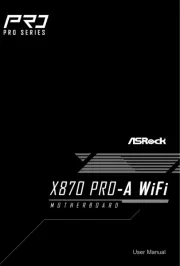
29 Juli 2025
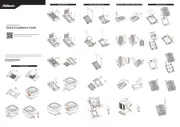
29 Juli 2025

4 Juli 2025
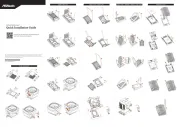
1 Juli 2025

1 Juli 2025
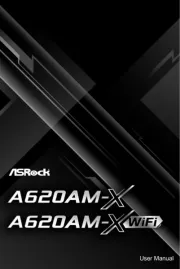
1 Juli 2025

30 Juni 2025

30 Juni 2025
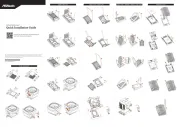
30 Juni 2025
Handleiding Moederbord
- Raspberry Pi
- Sharkoon
- Intel
- MSI
- Gigabyte
- AOpen
- ECS
- Advantech
- Foxconn
- EPoX
- Evga
- Asus
- Biostar
- Elitegroup
- Tyan
Nieuwste handleidingen voor Moederbord

30 Juli 2025
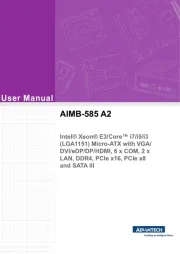
30 Juli 2025
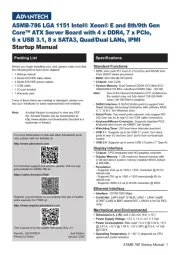
30 Juli 2025
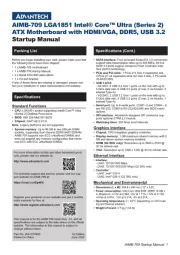
30 Juli 2025
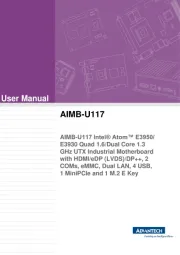
30 Juli 2025
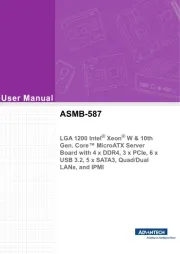
29 Juli 2025
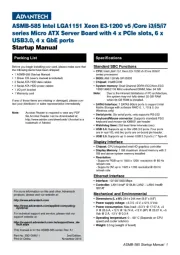
29 Juli 2025
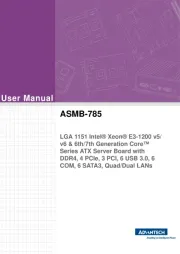
29 Juli 2025
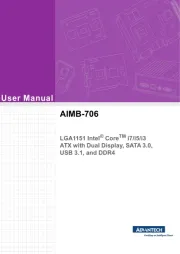
29 Juli 2025
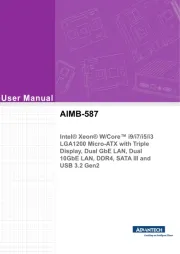
29 Juli 2025